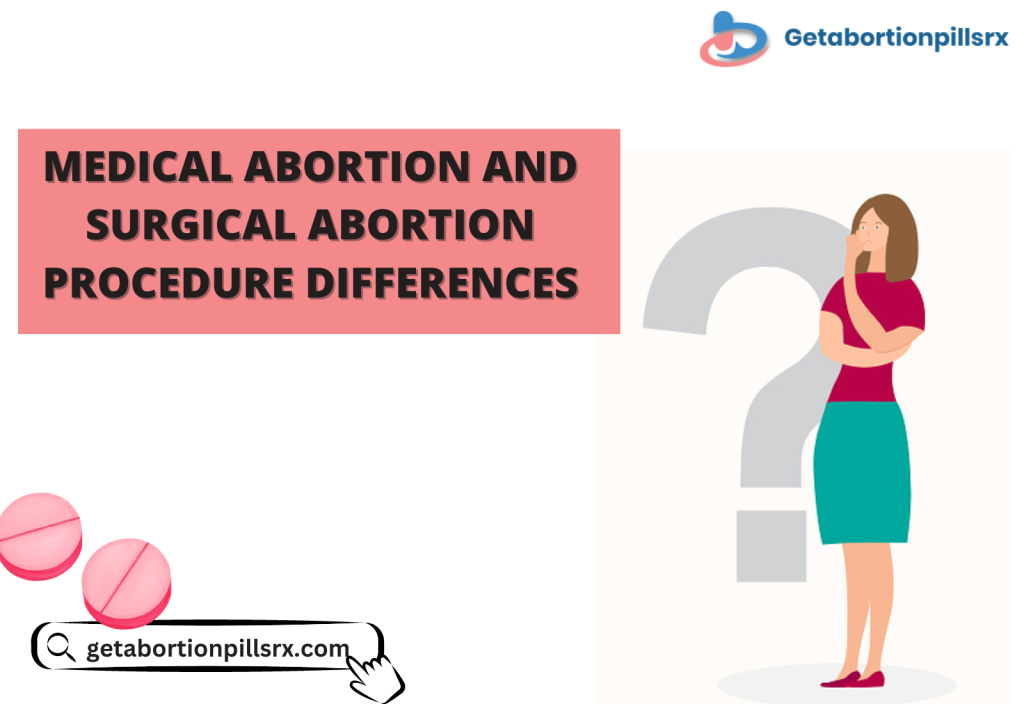Making the decision to terminate a pregnancy, you definitely want to know all your options, its effect, methods, outcomes, and more. Thus, it is important to understand the two possibilities available. If you are within the initial 9 weeks of gestation, then you can go ahead with medical abortion, which happens with the use of hormonal pills. Here, the location of pregnancy should be in the uterus. Whereas, a surgical termination applies the utilization of certain tools and anesthesia to end a pregnancy. It occurs in the first and second trimesters.

In most states, ending a pregnancy through the equipment is valid for up to 20 weeks, with some permitting the procedure for 24 weeks as well. Now let us understand more about surgical abortion and medication abortion in detail in the following post.
What is the Medical Abortion Process Like?
The provision of medical abortion allows women more privacy and ease when terminating a pregnancy. Early termination is also now more easily accessible to those living in rural and remote locations or without ready access to healthcare centers. There is a growing need for a safe abortion pill through teleconsultation or online pharmacies in the first trimester. This alternative is only for early pregnancies that are up to 63 days. Once you confirm the pregnancy via an ultrasound (often at around five weeks), it is possible to have a medical abortion up until nine weeks.
A combination of two medications – Mifepristone (anti-progesterone) and Misoprostol (prostaglandin E1 analog) completes the pregnancy termination. The primary medicine is a progesterone blocker that breaks the endometrial lining. You need to take it orally on the first day with water. The fetus separates from the womb’s wall. The second medicine you need to use after a day or two either buccally or vaginally. You may need at least 4 x 200mcg pills if taking with Mifepristone.
Misoprostol goes on to expel the pregnancy portions from the uterus. You can expect heavy period-like bleeding that may last till the womb empties. After this, the bleeding reduces and stays for a few weeks. Your fertility is never affected because of abortion pills. When we focus on risk factors, incomplete termination is a possibility. In this case, the physician may advise taking additional pills or invasive emptying of the uterus. Improper use of the medicine can lead to bleeding issues. And you need to maintain hygiene, or there is a risk of infection.
What Happens in a Surgical Abortion?
The majority of first-trimester surgical abortions occur under twilight sedation, through a local anesthetic. Once the anesthesia takes effect, the doctor gently removes the uterus’s contents and lining by inserting a tiny tube into the womb. The operation lasts around 10 to 20 minutes. But you should budget 4 to 5 hours from the time you arrive at the clinic until the examination concludes. You will require a support person to drive you home when the anesthesia wears off and you have received your aftercare instructions.
The most evident complication (up to 2%) is incomplete abortion, which happens when a little portion of the pregnancy or uterine lining is still present in the uterus. This can cause difficult bleeding or cramps, necessitating a second surgery. Although it is rare (1 in 500), ongoing pregnancy is more likely in treatments that occur during the first six weeks. There is very little (less than 1%) infection. Antibiotics are recommended together with your surgery to lower the risk.
Cervical injury is uncommon and its effects are rarely long-lasting. The most serious consequence is perforation of the uterus, in which the surgical instruments create a hole in the womb’s wall. Profuse bleeding is another risk. But otherwise, this procedure is safe and you can undertake it for late-term pregnancies.
To Conclude
Medical abortion and surgical abortion are both efficient to end a pregnancy. You need to weigh your options and note the pregnancy length and then decide the termination method to choose.